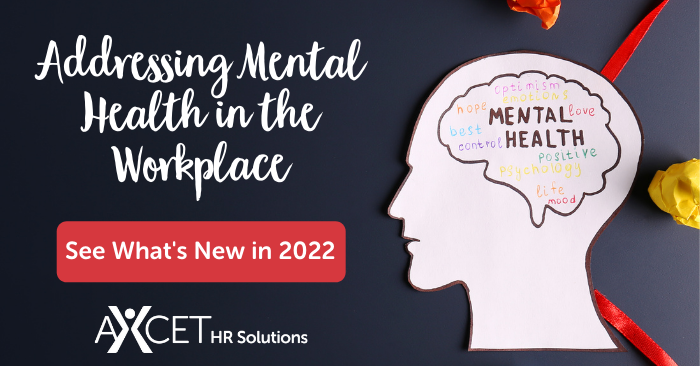
While the nation may be flattening the curve of the coronavirus pandemic – at least enough for businesses to consider bringing employees back to the workplace – another pandemic may be following right behind it. Marissa Levine, director of the Center for Leadership in Public Health Practice at the University of South Florida, says the “next pandemic wave may be mental health.”
Even before the threat of COVID-19 drove millions of people to remote work, 46% of Americans reported sometimes or always feeling alone, according to a January study by health insurer Cigna. The coronavirus has only made things worse. Mental Health America’s screening results show a rapid increase in moderate-to-severe anxiety that coincides with COVID-19’s acceleration. The organization’s president and CEO says the numbers demonstrate the pandemic is having a profound impact on the nation’s mental health.
RELATED: How Employee Mental Health During the Pandemic Impacts Employers >>
Workers who have been quarantined for weeks or months may have experienced financial, health and child care concerns, loneliness, job performance and job security fears, relationship stresses and grief over the loss of major life events or loved ones. As employees prepare to return to work, those anxieties may persist, and new ones may be added.

Eight Steps To Support Employee Mental Health
Small business owners who soon may be asking employees to come back to the workplace must recognize that returning team members, including managers, may be traumatized by their recent experiences, fearful of renewed social contact and frightened about what the future holds.
These workers also may be afraid of heightened coronavirus exposure when they no longer are shielded in their home environments. Individuals who contracted and recovered from COVID-19 may experience post-traumatic stress because of the uncertainty about potential long-term health effects or the possibility of succumbing to the virus a second time.
RELATED: The Many Benefits of an Employee Assistance Program >>
Anticipating that employees will be dealing with any number of mental health issues as they prepare to return to the workplace, businesses must get ready to address those concerns head-on. Companies can take eight essential steps to provide emotional support to employees who are returning to the workplace:
-
Give Employees a Voice
Before anyone comes back to work, invite conversation about how they feel about the impending change. Are they nervous their health risks will increase? Are they afraid they might have a hard time focusing on work? Are they anxious about how they will continue necessary care for family members when they are no longer working remotely? Because workforce health, both physical and mental, is mission-critical, concern for your employees’ welfare should take priority over business resumption. Expressing compassion and welcoming open discussions about how employees really feel not only will foster long-lasting loyalty that transcends your company but also help employees regain their footing so they can more quickly return to productivity.

-
Provide Workers with Resources
Employees who have experienced isolation, stress and trauma will need company and colleagues’ support. Provide contact information and other details that will make it easy for them to access services available through your employee assistance program and health insurance plan. Encourage them to recognize their needs and pursue any resources that may be beneficial.
If your EAP or insurance plans provide only limited assistance, offer links to professional mental health sources, local agencies, churches, community centers or national organizations, such as National Alliance on Mental Illness National helpline - 800-950-6264; Crisis text line - text “NAMI” to 741741 to chat with a trained crisis counselor; Substance Abuse and Mental Health Services Administration National helpline - 800-662-HELP; Disaster distress helpline - 800-985-5990; National Domestic Violence hotline - 800-799-7233 or text “LOVEIS” to 22522; or National Suicide Prevention Lifeline - 800-273-8255.
-
Help Employees Feel Physically and Psychologically Safe at Work
Several federal agencies have issued guidelines companies should follow as the nation’s workplaces begin reopening. In addition, think about how your workers would define safety and take measures that most effectively respond to those needs. This could include, for example, providing hand sanitizers, masks and gloves; repositioning workstations to ensure that employees are no closer than six feet to one another; establishing protocols against hand-shaking and other physical contact; posting reminders about regular handwashing and other hygiene practices; and arranging for common areas to be routinely disinfected before, during and after work hours. Let your employees know about these plans – and your expectations about how they’ll be followed – before reopening your workplace.
-
Be Flexible in Asking Employees To Return To the Workplace
State, county and city governments are providing guidelines on when businesses may reopen, but your company will be responsible for deciding when and how your employees will return. You may want to consider phased returns that limit the number of people at your worksite for a while. That could mean bringing back only the most necessary employees at first or scheduling employees in shifts or on alternating days. It also might mean giving your employees some freedom of choice to come back within a certain period so those who have ongoing family responsibilities or feel anxious about returning to the workplace can have extra time to adjust.
-
Lay Out Your Expectations for the New Normal
In the last two months, the American workplace has experienced unprecedented change. COVID-19’s impact on business will be long-lasting, but no one knows yet what that impact will be. As they prepare to come back to the workplace, employees will look to company leadership for direction. You can help employees feel more confident by spelling out any changes you plan to implement, including:
- Work hours for the days and weeks ahead, including phased or staggered schedules or other modifications.
- Options for employees to continue working remotely or on reduced schedules if any.
- Deadlines for a full return to the worksite.
- Any additional PTO or work flexibility you may provide to ease employees’ transition back to the workplace.
- Accommodations for children if daycare facilities have not reopened or if planned activities, such as summer camps, have been canceled.
- Dress codes, if you plan to change them from what was required previously.
- Worksite access, security measures and parking accommodations.
- Requirements for employees to have their temperatures taken at work or to wear personal protective equipment.
- Physical changes to your worksite, such as installation of plexiglass barriers between employees and customers.
- Travel restrictions.
-
Share the Path Forward
As states and municipalities begin lifting stay-at-home orders, employees’ attention will turn toward the company’s resiliency and their job stability. Let them know how the company has fared during the coronavirus lockdown period. If the company’s position is precarious, give people ideas about anything they can do to help right the ship. Without making false promises, communicate as hopeful a message as you can. Any commentary that assures employees they’re not at immediate risk of job loss will provide a measure of security and ease that particular anxiety. Consider holding bi-weekly town halls or using other channels to update employees on the company’s progress.
-
Recreate a Sense of Camaraderie
Any steps that reestablish some of the social interaction people have lost will be viewed as a source of support. While being mindful of social distancing recommendations, engage in activities your business held previously, such as recognizing employees’ birthdays or work anniversaries. Consider offering training that aids employees in developing listening skills, encouraging supportive workplace relationships or otherwise addressing workers’ concerns. Give employees space to form their own small groups to discuss specific issues they may be facing.
Employees also may find value in giving back to the community. Consider arranging volunteer opportunities, providing a means for employees to support a colleague who has a specific need or sharing links to local needs so employees can help if they’re interested in doing so.
-
Lead By Example, but Recognize Your Own Needs, Too
As a small business owner, any anxieties you’ve felt during the quarantine may now be compounded by the pressure to lead through a continuing crisis. Recovering from the stress of a pandemic, even if the company has not suffered, may take weeks or months. This realization can be overwhelming when you feel responsible for your employees and your company, which is why it’s important to pace and take care of yourself. People will look to you for direction and confidence, but you can’t lead others if you’re struggling. Scrutinize your own emotional state and, if you need help, reach out to a friend, a counselor, a faith leader or a mentor who can support and assist.
RELATED: 7 Surprising Ways an EAP Helps with Work-Life Balance >>
Every person and every business has been changed as a result of COVID-19, and there’s no guidebook to follow as you and your team seek out a new normal. It will take time and conscious effort for everyone to work through the event’s effects on their lives, their livelihoods and their mental health. Recognize that some people will be more deeply affected than others and that everyone will work through the process differently – and on different timelines.
During this period of stress and uncertainty, prioritizing workers’ wellbeing is more important than ever. Your company can help by maintaining a compassionate and consistent focus on employees’ mental health before and throughout the weeks after they return to the workplace.



Let us know what you think...